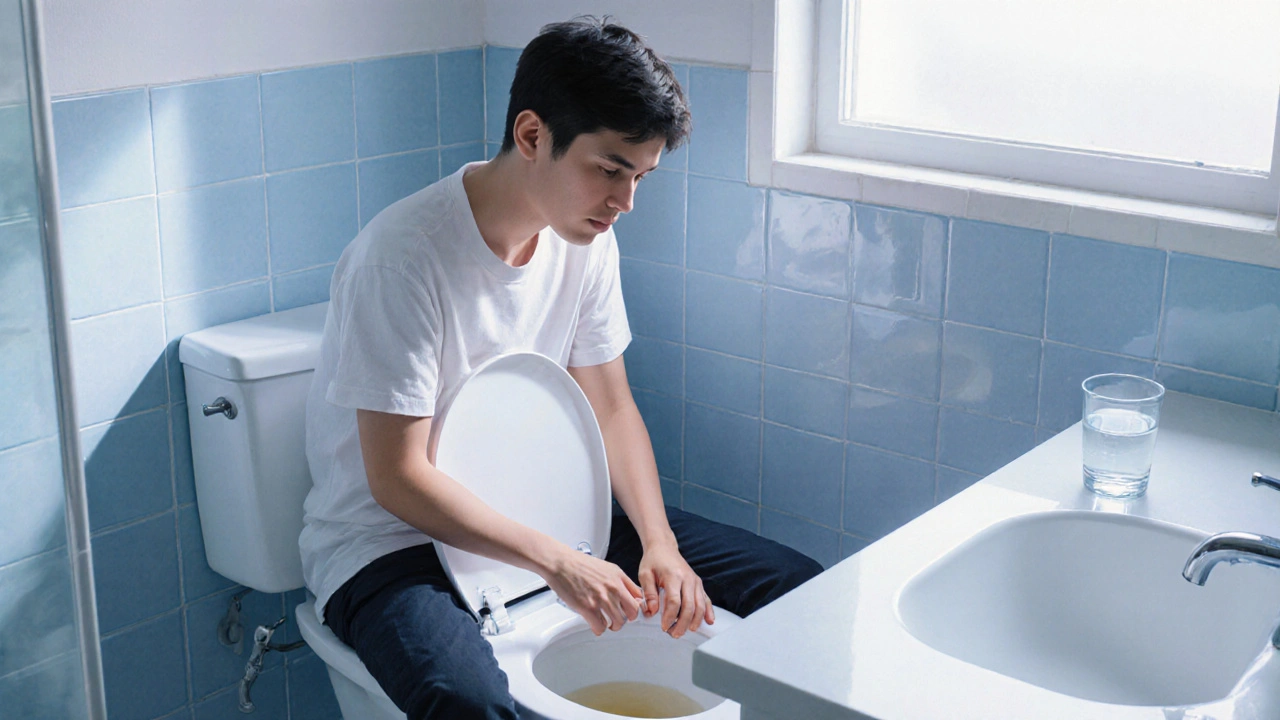If you find yourself running to the bathroom more than you’d like, you might be dealing with an overactive bladder (OAB). It’s not just a “getting old” thing; OAB can affect anyone and often shows up as a sudden urge to pee, frequent trips, or occasional leaks. The good news? Simple habits and a few lifestyle tweaks can make a big difference.
Overactive bladder is a condition where the bladder muscles contract too often or too strongly, even when it’s not full. This causes that urgent need to go, sometimes with a small amount of urine. OAB doesn’t always mean you have a disease, but it can be a sign that something in your daily routine is upsetting the bladder’s balance.
Common signs include:
These symptoms can affect work, social life, and sleep. Recognizing them early helps you act before they get worse.
Below are easy steps you can start today. They don’t require a prescription, just a bit of attention to your habits.
1. Watch Your Fluids – Too much caffeine, alcohol, or carbonated drinks can irritate the bladder. Try cutting back gradually and see if urgency improves. Also, spread your water intake throughout the day instead of gulping large amounts at once.
2. Pelvic Floor Exercises – Strengthening the muscles that support the bladder can reduce leaks. The “Kegel” method works: tighten the muscles you’d use to stop the flow of urine, hold for five seconds, then relax. Do three sets of ten reps each day. If you’re not sure you’re doing it right, many free videos walk you through the technique.
3. Manage Your Weight – Extra weight puts pressure on the bladder and pelvic floor. Studies link obesity with higher rates of urinary incontinence. Losing even a few pounds can lessen that pressure and improve control.
4. Bladder Training – Train your bladder to wait longer between bathroom trips. Start by timing your visits, then gradually increase the interval by 15 minutes each week. This teaches the bladder to hold more urine before signaling urgency.
5. Mind Your Diet – Certain foods—spicy meals, citrus fruits, artificial sweeteners—can irritate the bladder. Keep a short food‑symptom diary for a week to spot patterns. Removing the trigger often eases symptoms.
6. When to Talk to a Doctor – If leaks happen more than once a week, if you notice blood in urine, or if you have pain while urinating, schedule a visit. Doctors can rule out infections, bladder stones, or other issues and may suggest medication such as anticholinergics or beta‑3 agonists.
In some cases, a prescription can calm the bladder muscles, but lifestyle changes still make the biggest impact. Combining a short course of medication with the habits above usually yields the best results.
Lastly, don’t ignore the emotional side. Overactive bladder can feel embarrassing, but it’s a common medical problem that many people successfully manage. Sharing your experience with a trusted friend, partner, or support group can reduce stress and improve adherence to the steps you’re taking.
Take one change at a time, track how you feel, and remember that a calmer bladder is often just a few simple adjustments away.

Learn how dehydration concentrates urine, irritates the bladder, and triggers spasms. Get practical hydration tips, risk tables, and guidance on when to seek medical help.